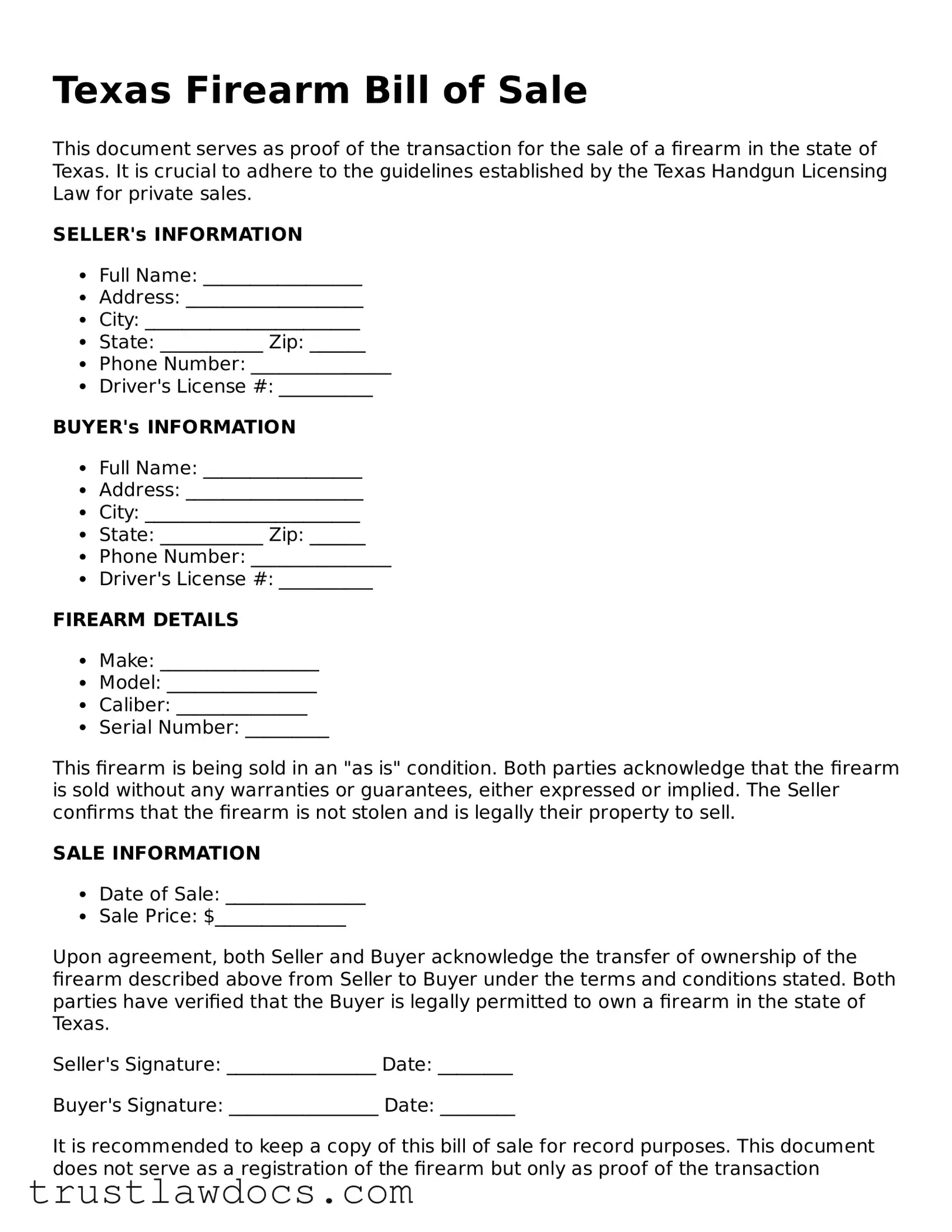What is a Texas Firearm Bill of Sale?
A Texas Firearm Bill of Sale is a legal document that records the sale and transfer of a firearm from a seller to a buyer in the state of Texas. It serves as proof of purchase and shows that the buyer is now the legal owner of the firearm. This document typically includes important details such as the make, model, caliber, and serial number of the firearm, in addition to the names and signatures of the buyer and seller.
Is a Firearm Bill of Sale required by law in Texas?
No, Texas law does not require a private seller to complete a Firearm Bill of Sale when selling a firearm. However, it is highly recommended to use one as it provides a written record of the transaction. This can be vital for proving ownership, the legality of the sale, and for personal records.
What information should be included in a Texas Firearm Bill of Sale?
To be comprehensive, the bill of sale should include the date of the sale, full names and addresses of both the seller and the buyer, a detailed description of the firearm (including make, model, caliber, and serial number), the sale price, and the signatures of both parties. It may also include terms of the sale and any warranties or "as-is" conditions.
Do both parties need to sign the Texas Firearm Bill of Sale?
Yes, for the document to be fully effective and to serve as a valid record of the sale, both the seller and the buyer must sign the bill of sale. It is also recommended to have the signatures notarized, although this is not a legal requirement in Texas.
Should I keep a copy of the Bill of Sale?
Yes, both the buyer and the seller should keep a copy of the Bill of Sale for their records. Having a copy can be crucial for proving ownership, satisfying any future legal requirements, or resolving any disputes that might arise regarding the firearm's sale or ownership.
Does the buyer need to perform a background check?
Under Texas law, private sellers are not required to conduct a background check on buyers when selling a firearm privately. However, it is the responsibility of the seller to ensure that the buyer is legally eligible to own a firearm. Sellers cannot knowingly sell a firearm to someone prohibited by law from possessing one.
Are there any specific forms or procedures to follow after completing the sale?
Once the sale is complete, there are no official Texas state procedures or forms required to be filed. However, it is advisable for the seller to maintain a record of the sale and for the buyer to register the firearm with local law enforcement if required by their local jurisdiction. Not all Texas localities require registration, so it's important to check the local laws and regulations.
